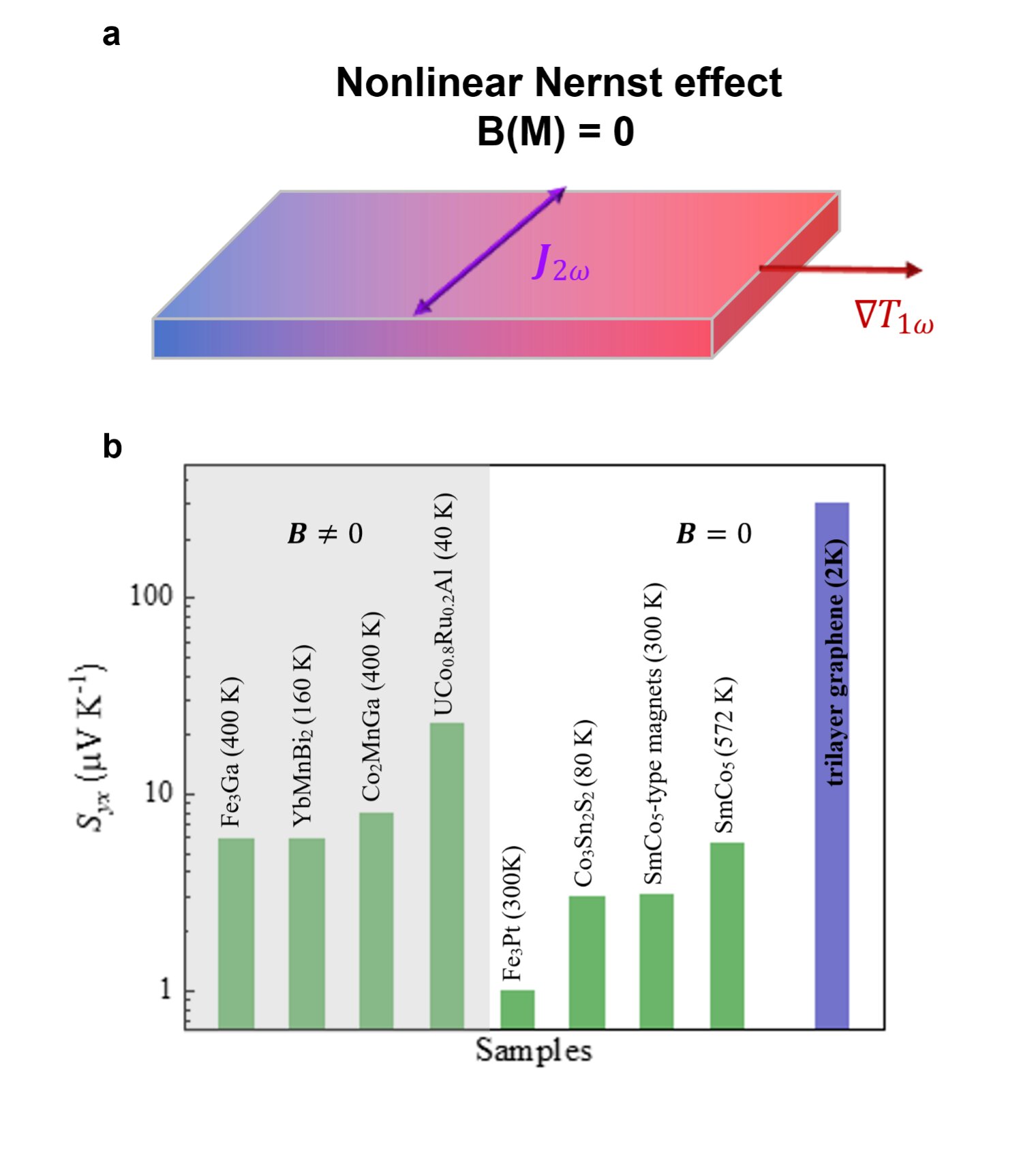Thermoelectric generation, also known as thermoelectric energy conversion, has proven advantageous in various practical applications. It has been shown to generate energy for space exploration and military missions in harsh environments, as well as recover waste heat from industrial plants, power stations, and even vehicles. The successful conversion of thermal energy to electrical energy relies on one of two distinctly different effects: the Seebeck effect and the Nernst effect. The Seebeck effect occurs at the junction of two different materials at different temperatures, generating an electric current in the circuit. On the other hand, the Nernst effect involves generating a transverse voltage in materials with a temperature gradient. So far, the Nernst effect has primarily been confirmed in systems that break time-reversal symmetry, specifically by applying an external magnetic field or using magnetic materials. However, recent theoretical physics has proposed that the nonlinear Nernst effect (NNE) may also occur in non-magnetic materials, particularly under zero external magnetic field conditions. According to foreign media reports, researchers from Fudan University and Peking University have experimentally achieved this idea for the first time. The related paper was published in the journal Nature Nanotechnology, detailing the observation of a considerable nonlinear Nernst effect in ABA-stacked trilayer graphene, which breaks inversion symmetry.
Researchers Achieve Nernst Effect in Non-Magnetic Materials

Share this post on: